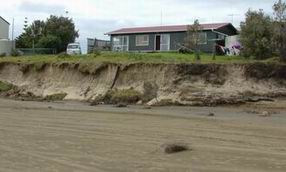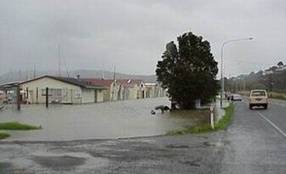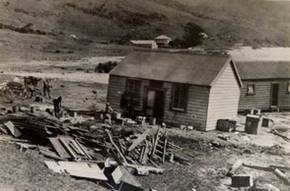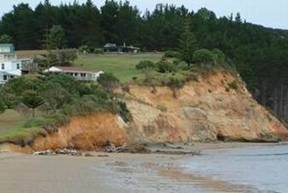7.1 Introduction
Coastal hazards are natural physical processes with the potential to cause loss of life or property. Northland's coast is at risk from a number of coastal hazards, including:
· Erosion
· Flooding from storm surge and wave run-up
· Tsunami
· Land instability, including cliff erosion
· Sand drift inundation
There are a number of pressures that exacerbate coastal hazards, including inappropriately sited development and subdivision within coastal areas, alteration to natural coastal processes, climate change and variability in global climate cycles.
Coastal hazard assessments have been carried out for many settlements in Northland to determine areas likely to be prone to hazards. However, no risk assessment has been undertaken to assess the consequence of coastal hazards occurring.
A number of initiatives have been undertaken, or are ongoing, in response to coastal hazards. These include coastal hazard assessments, regional and district plan requirements, coast care and others.


Foreshore erosion at Ahipara, December 2005 (left) and storm surge flooding at Kissing Point boatsheds, Whangarei Harbour in 1999 (right).


Tsunami damage to Berghan store in Ahipara, around 1910 (left), photograph courtesy of Far North Regional Museum, and cliff erosion at Hihi in 2005 (right).
Regional Policy Statement objective
The Regional Policy Statement contains the following objective:
· To avoid or mitigate the adverse effects of natural hazards by minimising and, where practicable, avoiding the risk to life and damage to property, infrastructural services and other aspects of the environment, from natural hazard events.
Environmental results anticipated
The following is the anticipated environmental results after the implementation of the natural hazards policies in the Regional Policy Statement:
· Increased public awareness of the risks of natural hazards and their exposure to them.
· A reduction in the damage caused to the environment by significant natural hazards.
· A reduction in the damage caused to the environment by inappropriate protection works.
Other legislation
Civil Defence and Emergency Management Act
The Civil Defence Emergency Management Act 2002 (CDEM Act 2002) was enacted to repeal and replace the Civil Defence Act 1983. The Act is supported by the vision "Resilient New Zealand - strong communities, understanding and managing their hazards". Prior to the CDEM Act, the need to manage the risks posed by natural hazards has not gone unnoticed by New Zealanders' legislature.
Management of natural hazards is legislated for in the Resource Management Act 1991, Soil Conservation and Rivers Control Act 1941, Building Act 1991, Earthquake Commission Act 1993, and even the Land Drainage Act 1908.
A key aim of the CDEM Act is to increase the role and functions of civil defence organisations, and make clear the responsibilities of government departments, lifeline utilities and emergency services in reducing hazard risk. The traditional focus of civil defence activities (waiting for a disaster to happen) has been expanded to encompass the four R's of Reduction, Readiness, Response and Recovery. It is expected that reduction requirements identified as part of this process will be implemented mostly through regional and district plans.
Building Act
Coastal hazards are also addressed through section 72 of the Building Act 2004 which relates to the granting of building consents, and provides that councils may refuse to grant building consent if land is subject to natural hazard or is likely to accelerate or worsen or cause a natural hazard on that land.
